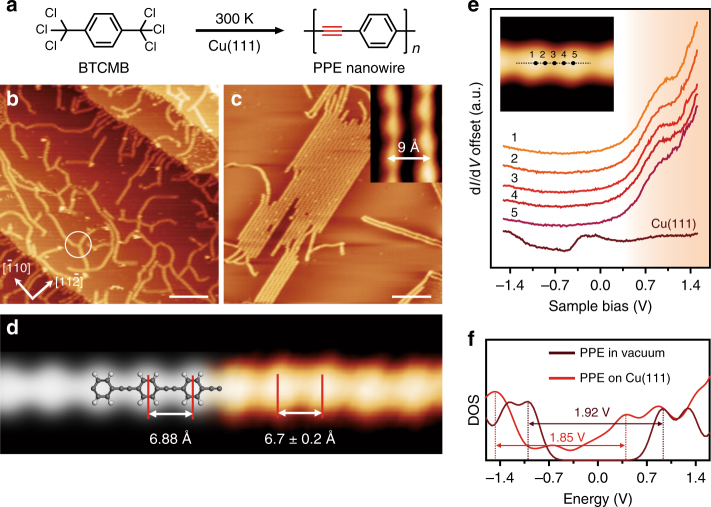Fig. 1.
Formation of poly(p-phenylene ethynylene) (PPE) molecular wires on Cu(111). a Coupling of 1,4-bis(trichloromethyl)benzene (BTCMB) to form PPE molecular wires. b Scanning tunneling microscopy (STM) image after dosing BTCMB onto Cu(111) at 300 K (I = 110 pA, V = – 1.85 V). Scale bar: 10 nm. c STM image of nanowires after annealing at 358 K (I = 70 pA, V = – 1.85 V). Scale bar: 10 nm. d Simulated STM image (left part) and experimental STM image (right part, I = 60 pA, V = – 1.85 V) of a PPE molecular wire, overlaid with the molecular model. Scale bar: 10 nm. e dI/dV spectra taken at different sites of the nanowire and Cu(111) surface. f Comparison of calculated density of states (DOS) for PPE in vacuum and on Cu(111) surface

